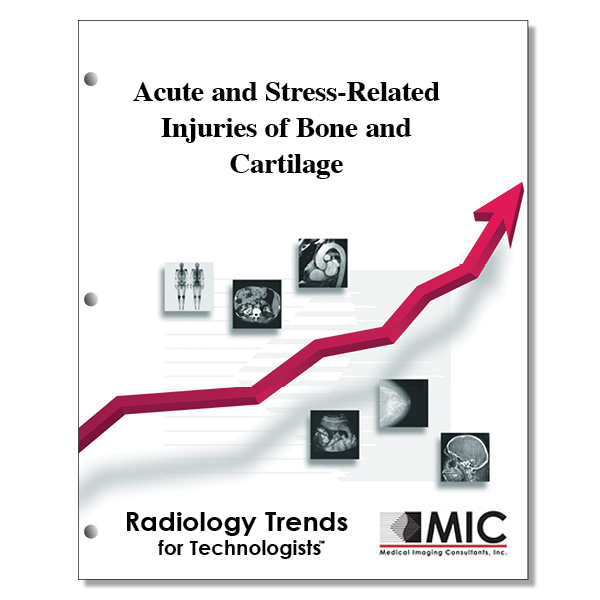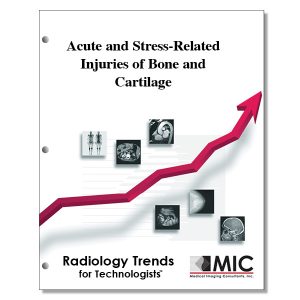

Acute and Stress-Related Injuries of Bone and Cartilage
The anatomy, physiology, and biomechanics of normal bone and cartilage are reviewed and imaging features encountered following acute traumatic and stress-related injuries to the skeleton are presented.
Course ID: Q00508 Category: Radiology Trends for Technologists Modalities: MRI, Radiography2.5 |
Satisfaction Guarantee |
$29.00
- Targeted CE
- Outline
- Objectives
Targeted CE per ARRT’s Discipline, Category, and Subcategory classification for enrollments starting after February 17, 2023:
[Note: Discipline-specific Targeted CE credits may be less than the total Category A credits approved for this course.]
Bone Densitometry: 2.00
Patient Care: 2.00
Patient Bone Health, Care, and Radiation Principles: 2.00
Computed Tomography: 2.50
Procedures: 2.50
Head, Spine, and Musculoskeletal: 2.50
Magnetic Resonance Imaging: 2.50
Procedures: 2.50
Musculoskeletal: 2.50
Nuclear Medicine Technology: 2.00
Procedures: 2.00
Other Imaging Procedures: 2.00
Radiography: 2.50
Procedures: 2.50
Extremity Procedures: 2.50
Registered Radiologist Assistant: 2.50
Procedures: 2.50
Musculoskeletal and Endocrine Sections: 2.50
Sonography: 2.50
Procedures: 2.50
Superficial Structures and Other Sonographic Procedures: 2.50
Outline
- Introduction
- Skeletal Development and Growth
- Modeling and Remodeling
- Bone Anatomy
- Macroscopic Anatomy
- Microscopic Anatomy
- Articular Cartilage Anatomy
- Stresses, Forces, and Modes of Structural Failure
- Chondral and Osteochondral Injury
- Subchondral Bone
- Anatomic and Biomechanical COnsiderations
- Subchondral Contusion (Bone Bruise
- Cortical Bone
- Biomechanics of Cortical Bone
- Crack Initiation and Deflection
- Cortical Fracture
- Stress Injury of Bone
- Insufficiency Fracture
- Fatigue Fracture
- Summary
Objectives
Upon completion of this course, students will:
- state the processes of bone development
- organize the process of intramembranous ossification
- recall the layers of tissue essential to bone turnover
- list the areas of endochondral ossification
- state the primary ossification center of tubular bone
- describe the growth plate location
- list the responsibilities of osteoclasts
- describe osteocytes
- describe how long skeletal remodeling lasts
- list the stages of remodeling
- describe the effect of bisphosphonates on the process of bone resorption
- state the prominence of woven bone
- express how much of the adult skeleton is comprised of cortical bone
- know the composition of hematopoietic and fatty marrow
- define matrix
- list the mineral components of the matrix
- relate minerals to bone strength, rigidity, and hardness
- define hyaline articular cartilage
- explain the composition connective tissue located in Hyaline articular cartilage
- recall the responsibilities of chondrocytes
- define load
- define anisotropy
- list the forms of uniaxial loading
- list the factors that determine the biomechanical behavior of articular cartilage
- state the most common location for chondral and osteochondral injuries
- give the percentage of osteoarthrosis seen in adult knee arthroscopies
- list the types of osteochondral injuries
- state the location in the body where trabeculae are studied most extensively
- differentiate bone porosity for cortical and cancellous bone
- state how many osteons are contained in the adult skeleton
- tell where tensile bone injury classically occurs
- note the number of stress fracture subtypes
- list the components of the “female athlete triad”
- relate bone mineral density to percent of bone strength
- document where fatigue injury most commonly occurs
